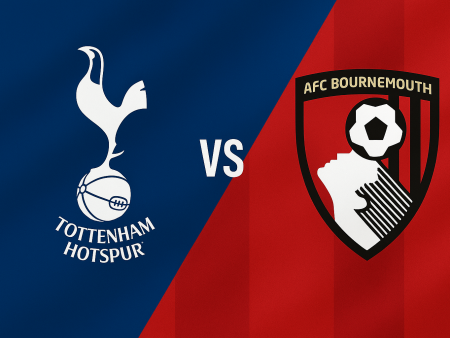How to Structure Effective Sport-Specific Warm-Ups
Warming up is a fundamental step in preparing athletes for training or competition, yet many coaches still use outdated or generic approaches that fail to benefit their team. Gone are the days of jogging laps and static stretching; modern, effective warm-ups are dynamic, purposeful, and tailored to both the demands of the sport and the goals of the session. In this comprehensive guide, you'll learn how to create targeted warm-up routines that not only reduce injury risk but also prime your athletes physically and mentally for success.
Why Sport-Specific Warm-Ups Matter
A warm-up should closely mirror the unique movement patterns, skills, and equipment required in your sport. Generic routines-like running laps or idle stretching-do little to activate sport-relevant muscles or develop the mental focus necessary for performance.
For example, in soccer, it's essential to include the ball and allow space for players to move freely, engaging in passes, dribbles, and game-like actions right from the start. This quickly bridges the gap between just getting loose and being ready to compete. By incorporating sport-specific elements early, athletes are not only physically warmed up, but also mentally attuned to the tactical demands they'll face.
Guidelines for Creating Tailored Warm-Ups
When designing a warm-up, consider the following principles:
- Use Relevant Equipment: Incorporate balls, cones, and other gear typical of the sport.
- Create Realistic Environments: Set up activities in spaces where players have room to perform game-like actions, not just stationary drills.
- Progression Matters: Start with low-intensity movements and build toward more dynamic activities as the warm-up advances.
- Delay Higher-Intensity Actions: Avoid sprints and explosive movements until the body and mind are fully engaged and muscles have adapted to lighter activities.
For soccer and similar invasion sports, a selection of ball-based activities can make warm-ups game-realistic and enjoyable. This also encourages constant engagement, reducing downtime and maximizing preparation time.
Integrating the Session Topic into Your Warm-Up
Warm-ups aren't just for loosening up muscles-they’re an opportunity to introduce the focus of the session. An effective warm-up prepares your athletes not only physically but also mentally for the key learning objectives or tactical concepts you'll be emphasizing.
For instance, if the session is dedicated to building communication, decision-making, or a specific tactical theme, use activities that demand those elements.
To maximize value:
- Choose activities where athletes must observe, communicate, and adjust quickly.
- Use your voice for brief, targeted encouragement-not lengthy explanations or stoppages.
- Allow the activity’s structure and its progressions to prompt players toward the day’s learning outcomes.
This approach helps athletes warm up their bodies and their brains, laying the foundation for a productive practice.
Building Intensity Gradually for Optimal Performance
One of the most common mistakes in warm-up design is either starting too quickly or switching between low and high intensity with no logical progression. The most effective routines begin at a moderate pace, enabling athletes to acclimate, before gradually ramping up both the physical and cognitive demands.
Elite endurance runners, for example, start their sessions with a very easy pace-allowing the heart, brain, and muscles to adjust-before increasing intensity step by step. Coaches should adopt a similar mindset, creating a sequence of tasks or challenges that foster an organic rise in activity level.
Key pointers:
- Never begin with maximal efforts or sprints-wait until athletes are thoroughly prepared.
- Introduce competitive elements or quick-reaction games only after lighter activities.
- The warm-up shouldn’t exhaust players; instead, it should leave them energized and ready for the main session.
Practical Example: Dynamic Warm-Up Routine for Invasion Sports
Let’s break down a dynamic warm-up sequence designed for soccer or any invasion sport. This routine not only gets athletes moving, but also reinforces tactical skills and communication:
Phase 1: Ball Movement and Passing
- Four players are stationed within small marked squares.
- The group works to pass the ball, with players following their pass to take a new spot, ensuring constant motion.
- Ball-to-player ratio is kept high (e.g., 3 balls for every 4 players) to maintain activity and focus.
- After about five minutes, add new layers of complexity to keep engagement high.
Progression 1: Defensive Pressure
- Introduce four defenders to apply pressure inside the drill.
- When a player loses possession, they switch roles with a defender. This adds a game-like transitional aspect and elevates the physical and mental challenge.
Progression 2: Competitive Small-Sided Game
- Divide the squad into three groups of four: two teams play 4v4 in the central area, with the third team locked in the squares waiting to be "freed" by good team play.
- Teams compete to see how quickly they can unlock all teammates by executing smart passes and moving efficiently.
- The activity turns into a time-based challenge, allowing each team to take on different roles (attackers, defenders, support).
This structure naturally increases intensity as athletes acclimate, fosters decision-making under pressure, and directly applies the demands of the sport.
Why This Structured Approach Works
A well-designed, progressive warm-up delivers several clear benefits:
- Prepares Sport-Specific Muscles: Players use the same movement patterns and energy systems as the main session.
- Sharpens Awareness: Early engagement in decision-making and communication ensures players are tactically switched on.
- Reduces Injury Risk: Layered intensity minimizes the chance of strains or overexertion.
- Sets the Tone: A purposeful start communicates expectations and focus for the entire training session.
By finishing the warm-up with higher-intensity, game-related actions, athletes are primed-physically and mentally-for peak performance in the main activity.
Conclusion: Key Takeaways for Coaches
To craft an effective warm-up:
- Start with low-intensity, sport-specific activities that engage both body and mind.
- Build toward session objectives, incorporating both technical and tactical elements early.
- Increase intensity progressively, saving all-out efforts or sprints for later in the warm-up.
- Design each phase to flow naturally into the heart of your training session or competition.
This approach ensures your athletes are fully ready to maximize their learning, enjoy practice, and perform at their best-both now and in future sessions.













